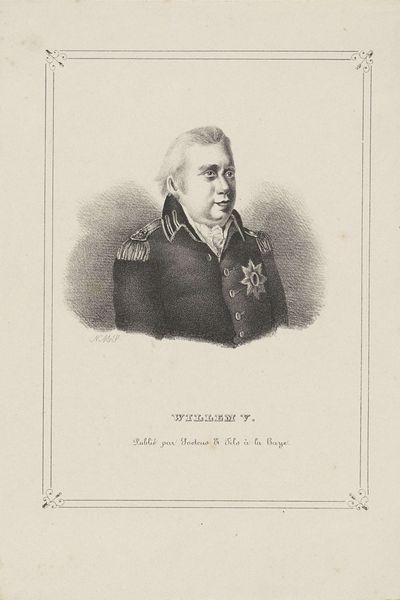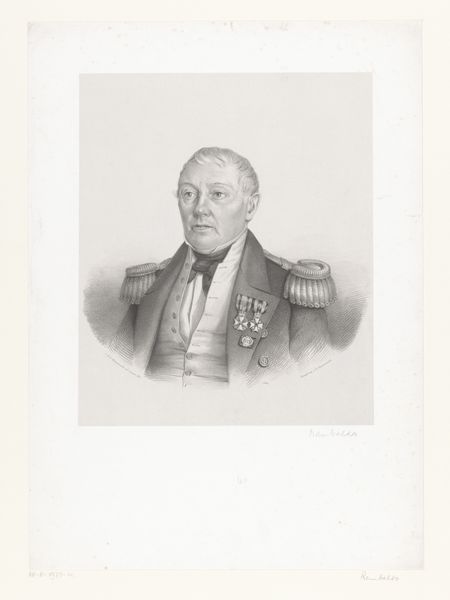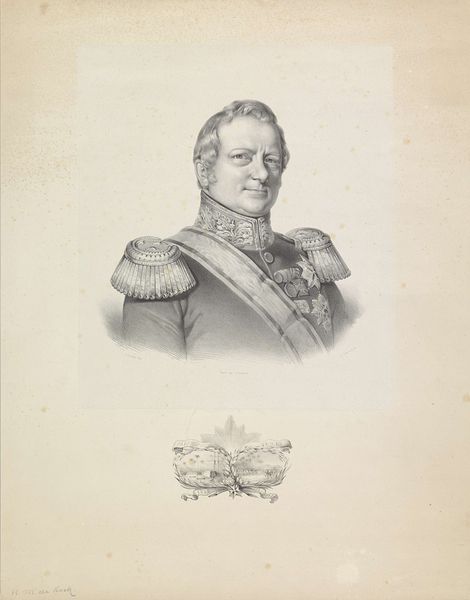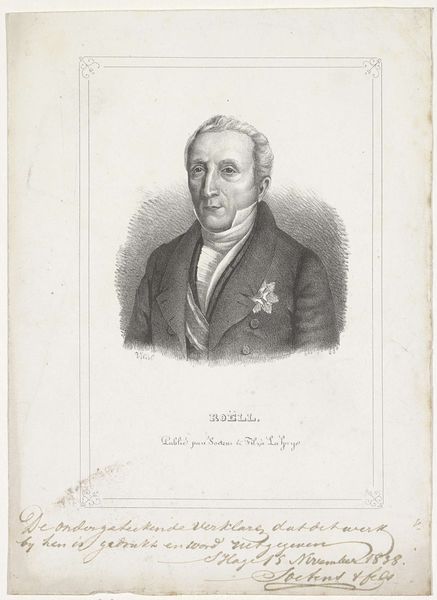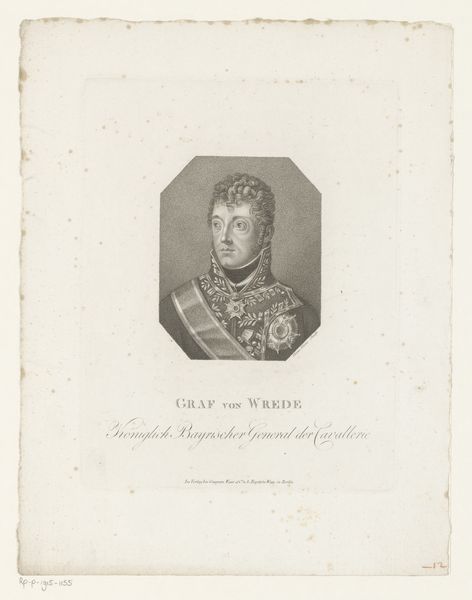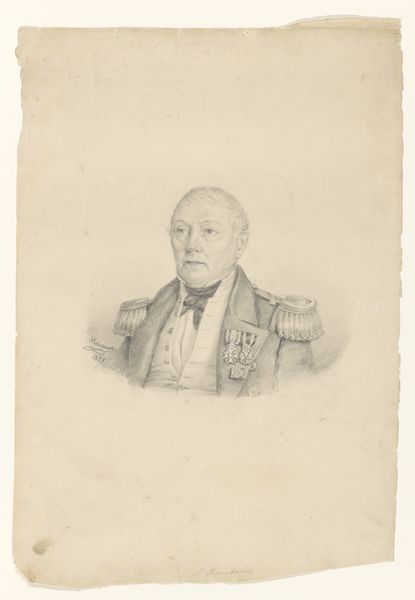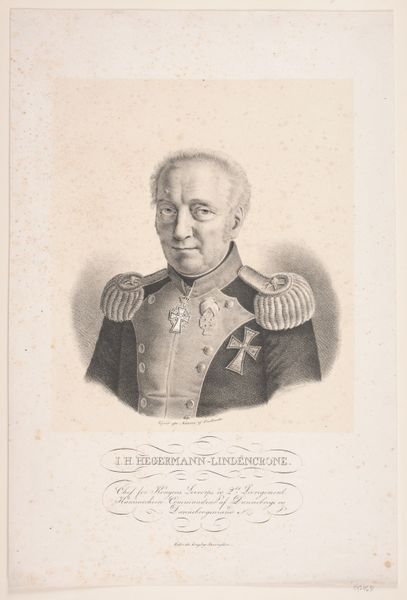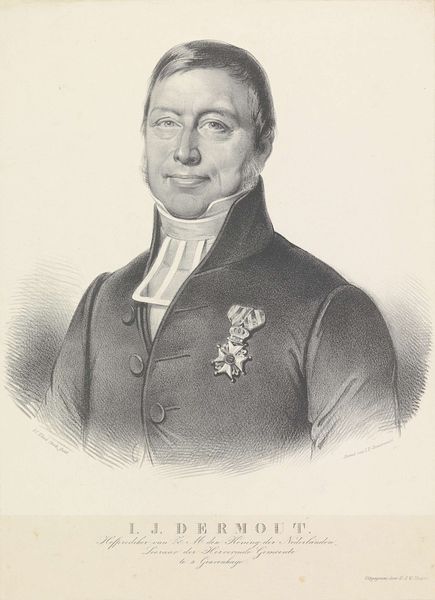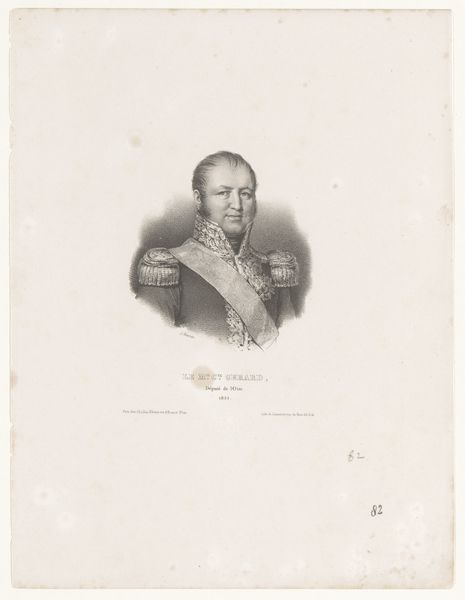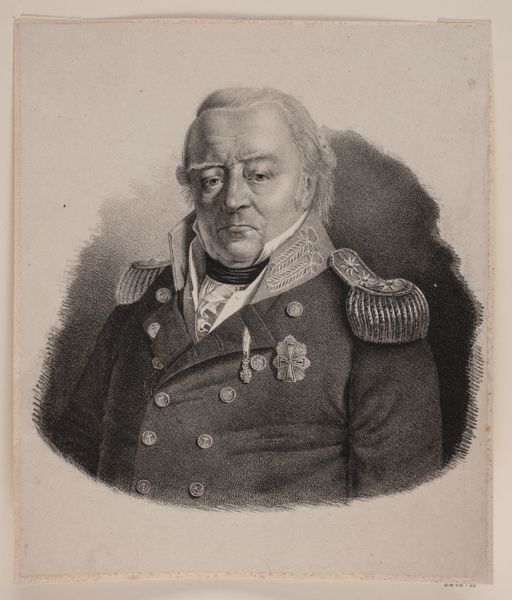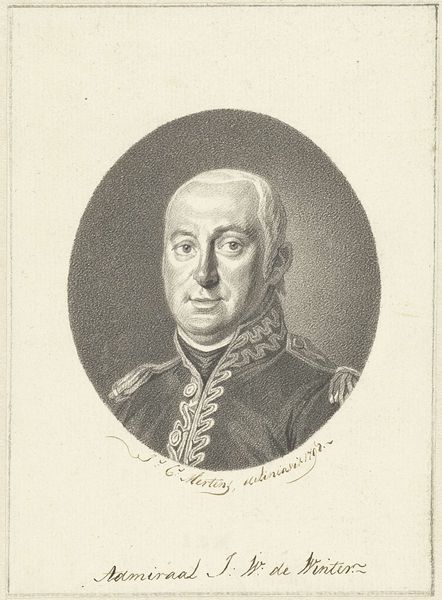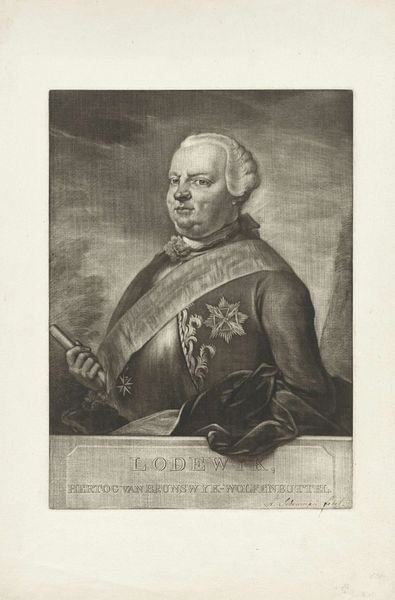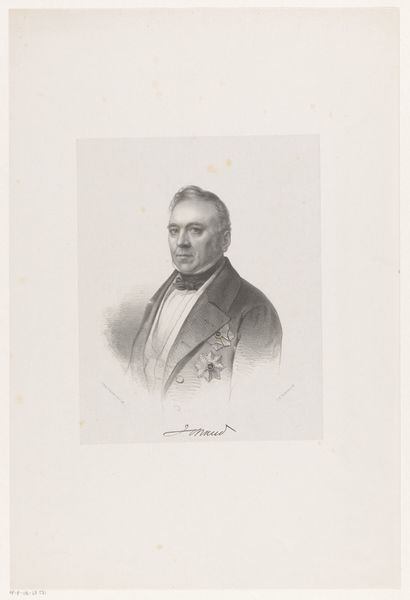
print, graphite, engraving
#
portrait
# print
#
charcoal drawing
#
graphite
#
graphite
#
engraving
Dimensions: height 425 mm, width 295 mm
Copyright: Rijks Museum: Open Domain
Curator: Here we have a portrait of Jan Schouten, completed in 1852 by Leonard de Koningh. The piece is a print using graphite and engraving. Editor: It has a very crisp quality. The lines are so fine and precise. Look at the detailing in the ceremonial collar – a sense of texture has been achieved by building up thousands of individual lines, all cut into metal. The craftsperson must have had incredible skill. Curator: The context is important here. Portrait engravings like this were crucial for circulating images of prominent figures throughout society. Jan Schouten was likely a notable person in his community, and this print would have been a way to commemorate his status and accomplishments, fostering a sense of civic pride and collective identity. Editor: All those symbols of authority on his chest certainly tell of an important figure, the embellishments signify some kind of elite rank. This is such a studied pose, the subject carefully constructed. He wouldn’t have dressed like this every day; so it's about performance. Curator: Exactly. It speaks to the power of imagery and how it can be used to shape public perception and maintain social order. Portraits played a significant role in solidifying social hierarchies, reinforcing the authority of those in positions of power. Editor: Let's consider the materiality further. The shift from a drawing to an engraving means that multiples can be produced for widespread distribution, something originally drawn in charcoal and graphite can be multiplied. The use of mechanical means is itself quite significant in the mid-19th century. It democratizes representation while simultaneously solidifying existing power structures. Curator: Indeed, it reflects the tensions between technological advancement and traditional hierarchies. While the printing process enabled wider dissemination of images, access to these prints was likely still limited by social class and literacy. Editor: I appreciate how you’ve contextualized the circulation and consumption of these images. Thinking through material processes certainly encourages new dialogues around art. Curator: It’s these complex dynamics that make studying the history of art so rewarding; you can draw insights from the artistic techniques, the social purpose that the work had and even today it can bring to light the circumstances of its era.
Comments
No comments
Be the first to comment and join the conversation on the ultimate creative platform.
